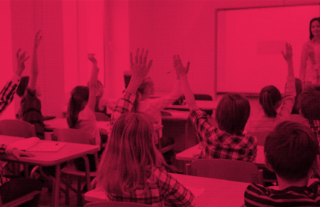How Teachers Can Use “Flow” to Recharge This Summer


From classroom management to spending hours grading homework after school, teachers rarely have time to themselves. That’s because teachers’ daily schedules are segmented by planned activities or the bell schedule and are frequently interrupted. In psychological terms, teachers aren’t reaching a state of consciousness called “flow.”
What is Flow?
The concept of flow was created by Mihaly Csikszentmihalyi, a Hungarian-American psychologist and a pioneer in the study of happiness. He teaches that people are happiest when they are in a state of flow – when someone is so immersed in an activity that he loses complete sense of time or knowledge of what’s going on around him.
As Csikszentmihalyi puts it in an article for Wired magazine:
“Being completely involved in an activity for its own sake. The ego falls away. Time flies. Every action, movement, and thought follows inevitably from the previous one, like playing jazz. Your whole being is involved, and you’re using your skills to the utmost.”
Teacher Flow
We hope that the majority of the time you reach a state of flow in the classroom. There’s no better feeling than when you’re teaching a lesson and the students are engaged – they are really “getting it.”
However, that’s not the case every day. If the day was full of disruptions, you leave feeling restless and dissatisfied. That’s why we’re encouraging teachers to seek opportunities after school and during the summer to put some flow back into their lives.
Flow Activities
There is no limit to the number of activities you could do to reach a flow state. You probably already have a hobby or passion that you lose all track of time when practicing.
Examples include:
- Sports such as baseball, soccer or volleyball
- Getting outdoors by walking, hiking or climbing trails
- Home improvement projects
- Visual arts like photography, painting, pottery or woodworking
- Methodical handicrafts like weaving, knitting or cross-stitch
- Gardening, cooking or baking
- Journal, write or scrapbook
- Playing an instrument, singing or dancing
- Jigsaw puzzles, sudoku or crossword puzzles
Flow is Not the Same as Relaxing
Keep in mind that leisure is not the same as working in a state of flow. Passive activities such as watching TV, reading a book, or napping do not count. Though these activities are restorative and necessary when you need to take a break, they don’t engage your brain in the same way.
The Ideal Flow Activity
You reach a state of flow when you are challenged by an activity. Your brain is engaged and you feel you’re making progress toward a goal. The task cannot be too challenging though because we get discouraged or become apathetic.
In a state of flow, you lose all self-consciousness. And, you know exactly where you stand at all times with immediate and unambiguous feedback.
For example, when assembling a jigsaw puzzle, you know at a glance how much of the puzzle you still have to complete and can tell if the puzzle meets your skill level by how many pieces you can join within a few minutes. If you work for 30 minutes and don’t connect any pieces, you may get discouraged and abandon the project.
However, if you steadily work fitting together piece after piece, you can see the picture slowing come into view. When you click that final piece into place, you are rewarded with a feeling of satisfaction. You may look up and realize hours have gone by without you noticing.
You don’t emerge with a sense of relief or release of anxiety. You leave the table rejuvenated. This is a state of flow.
Summer Flow
We wish for all teachers to find their own flow activities throughout the summer that they can completely immerse themselves in, and feel renewed and ready to tackle the next school year.
Here’s to a summer of rest, relaxation… and flow!




